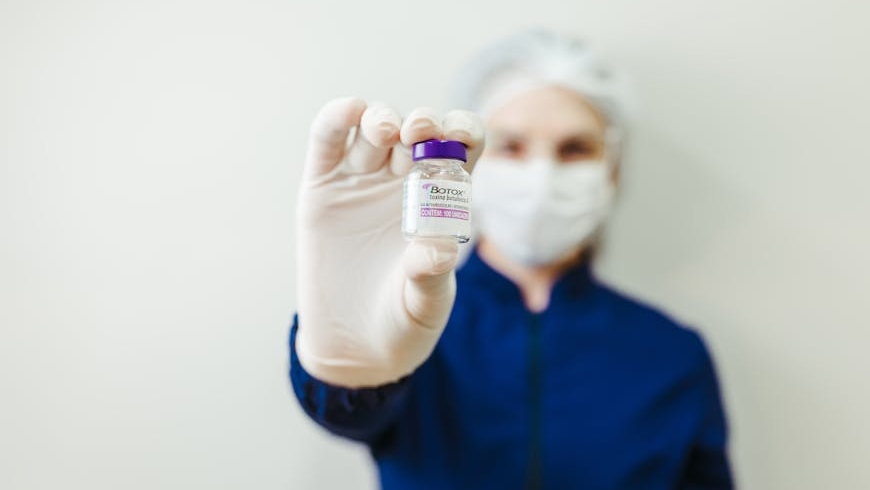Botox Side Effects: What They Are and How to Manage Them With Lucia Clinic

Botox is widely recognized for its ability to reduce wrinkles and fine lines, making it a popular choice for those seeking a more youthful appearance. Beyond cosmetics, Botox is also used to treat various medical conditions, such as chronic migraines, muscle spasms, and excessive sweating. While Botox offers numerous benefits, it’s crucial to be aware of its potential side effects. Understanding these side effects and how to manage them can help ensure a safer and more comfortable experience. In this blog post, Lucia Clinic will explain the common Botox side effects and provide practical tips on managing them effectively.
Does Botox Have Side Effects?
Many people wonder if Botox has side effects, and it’s important to address these concerns. While Botox is generally safe when administered by qualified professionals, some side effects can occur. These might include temporary bruising, headaches, or slight pain at the injection site. More serious side effects are rare but can happen.

Understanding these Botox side effects helps you know what to expect.
Understanding these potential side effects helps you make informed decisions about Botox treatments. It’s essential to consult with experienced professionals who can guide you through the process and minimize any risks. They can provide personalized advice and ensure the treatment is done safely. Always prioritize your health by seeking out skilled and reputable practitioners for Botox Dubai.
What Are the Side Effects of Botox?
Most people experience only mild side effects after receiving Botox. These can include:
- Bruising: Small bruises may appear around the injection site.
- Swelling: Mild swelling is common and usually goes away quickly.
- Pain at the injection site: Some discomfort or tenderness might be felt where the Botox was injected.
Common Side Effects
These side effects of Botox are more common but generally not serious:
- Headaches: Some people may get mild headaches after treatment.
- Redness: Temporary redness around the injection area is normal.
- Drooping eyelids and eyebrows: Rarely, the eyelids and eyebrows may droop slightly for a few weeks.
Less Common Side Effects
Though less common, these side effects may occur and usually resolve on their own:
- Dry mouth: Some individuals may experience a dry mouth.
- Fatigue: Feeling unusually tired can happen to a few people.
- Flu-like symptoms: Mild symptoms similar to the flu can occur.
Rare but Serious Side Effects
These are very rare but require immediate medical attention:
- Allergic reactions: Signs include itching, rash, or difficulty breathing.
- Muscle weakness: Unintended muscle weakness can happen if Botox spreads beyond the injection site.
- Vision problems: Blurred vision or double vision, though extremely rare, should be reported to a doctor immediately.
Botox Neurological Side Effects
Botox is one of the most popular facial treatment Dubai offers, but it can cause rare neurological side effects like muscle weakness and difficulty swallowing. Muscle weakness occurs when the toxin spreads beyond the intended area, affecting non-targeted muscles. This can impair daily tasks but usually resolves within weeks to months.
Difficulty swallowing (dysphagia) happens rarely. One study found that only one patient (0.067%) experienced it, and it resolved spontaneously within 2 weeks. Breathing issues, although extremely rare, require immediate medical attention.
Neurological side effects are infrequent. However, there is one small UCI study that suggests that Botox injections in the forehead might change how the brain interprets and processes emotions in others. Typically, people unconsciously mimic facial expressions like happiness or anger. Botox prevents these muscle movements, potentially disrupting the brain’s interpretation of these emotions. Conversely, some research indicates that the inability to frown could benefit individuals with depression.

While Botox is generally safe, there are potential neurological side effects.
Side Effects of Botox for Migraines
Botox is also used to treat chronic migraines, and the side effects can differ from those associated with cosmetic treatments. For migraines, Botox injections might cause neck pain and headaches, which can seem counterintuitive since it is used to alleviate migraine headaches. This neck pain is more common with migraine treatment than cosmetic use due to the larger number of injection sites and dosage in the first place around the head and neck. Additionally, some patients may experience muscle stiffness or weakness, which differs from the localized side effects like bruising and swelling seen with cosmetic treatments. While both types of Botox treatments share common side effects, such as mild pain at injection sites and temporary discomfort, the extent and nature of these effects can vary significantly depending on the treatment’s purpose.
Managing Common Botox Side Effects
Managing common side effects of Botox can be straightforward with a few practical tips:
- Apply ice: Use an ice pack on the injection site to reduce inflammation and discomfort, but do not apply only ice directly to the skin.
- Avoid strenuous activities: Refrain from intense physical activities for at least 24 hours post-treatment to prevent irritation.
- Keep head elevated: Avoid lying down for at least 4 hours after the injections to minimize swelling and prevent the toxin from migrating.
- Avoid massaging: Do not press or massage treated areas for the first 12 hours or have cosmetic treatments for at least 24 hours.
- Don’t use makeup: No makeup on treated areas for the first 12 hours.
- Use pain relievers: Take over-the-counter pain relievers like acetaminophen for headaches, but avoid aspirin to reduce the risk of bruising.
- Cold compress: Apply a cold compress to areas with mild swelling or redness to soothe the skin.
- Stay hydrated: Drink plenty of water and maintain a healthy diet to support overall recovery.
When Do Botox Side Effects Go Away?
The most common side effects of Botox, such as bruising, swelling, and mild pain at the injection site, typically resolve within a few days to a week. Headaches and temporary muscle weakness may also subside within a week. Neck pain, particularly associated with Botox treatment for migraines, usually diminishes within two weeks. More serious side effects, like difficulty swallowing or significant muscle weakness, may last longer and require medical attention if they persist beyond a few weeks.
It is essential to monitor your symptoms and consult your healthcare provider if you experience severe or prolonged side effects, such as difficulty breathing, vision problems, or significant muscle weakness. Immediate medical advice is crucial if any of these serious symptoms occur to ensure appropriate and timely intervention.
What Are Botox Side Effects? Now You Know!
Understanding the potential Botox side effects, their typical duration, and how to manage them is crucial for a safe experience. Common side effects like bruising, swelling, and mild pain usually resolve within a week, while more serious symptoms require prompt medical attention. Always consult with a healthcare provider to get personalized advice and ensure the best possible outcome from your treatment for Botox and fillers Dubai clinics offer.




